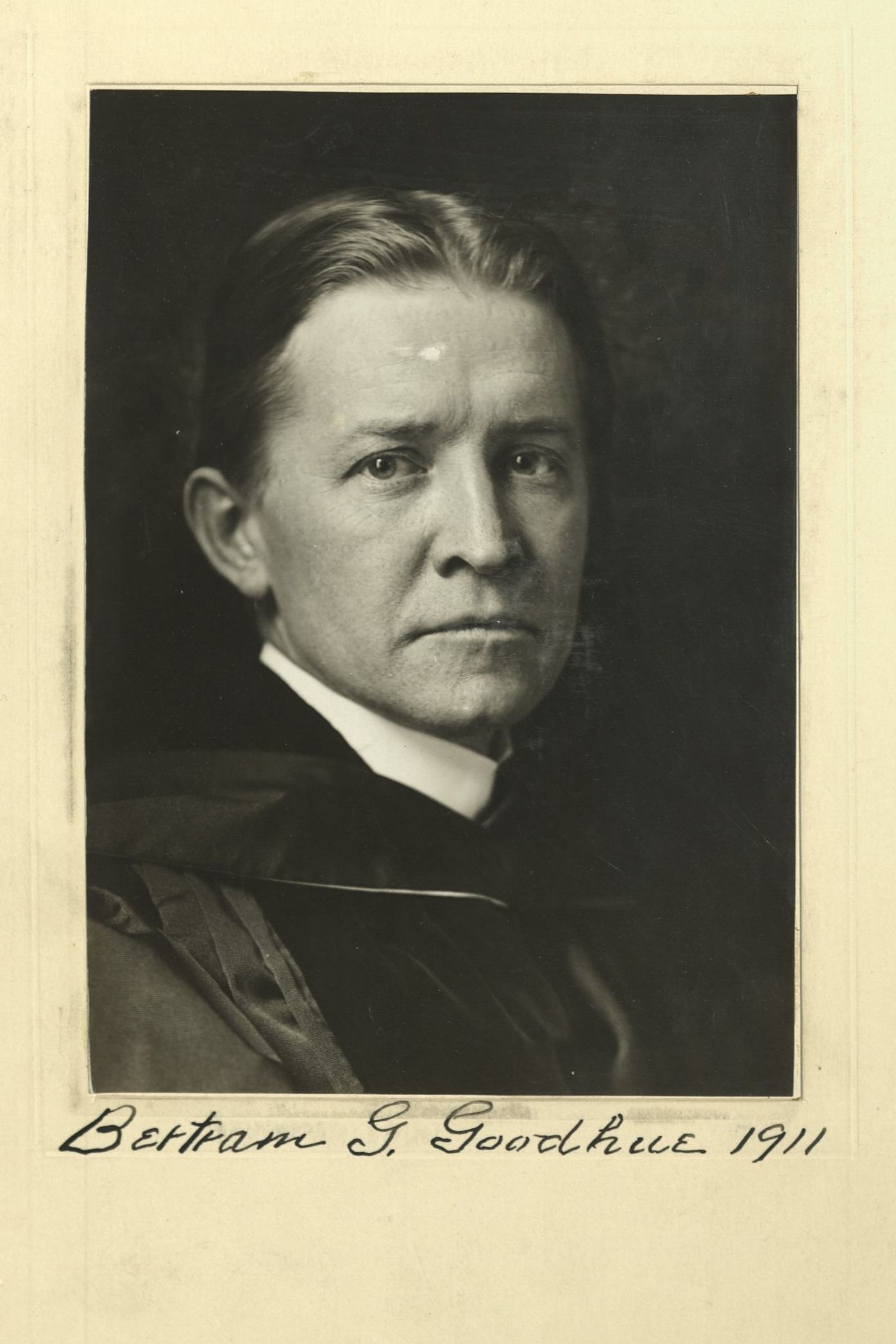Architect
Centurion, 1911–1924
Born 28 April 1869 in Pomfred, Connecticut
Died 23 April 1924 in New York (Manhattan), New York
Buried Church of the Intercession , Manhattan, New York
, Manhattan, New York
Proposed by William Rutherford Mead and Harold G. Henderson
Elected 2 December 1911 at age forty-two
Proposer of:
Seconder of:
Century Memorial
The longer a Centurion mingles in our cheerful fellowship, the better he learns whereabout in the Club-house to look for certain well-known members. He knows, for instance, that at mid-day Major Putnam will be found equipped with his coffee and pipe in the Graham Library, and after dark by the writing table in the extreme southeast corner of the reading-room. He would go to the billiard-room of an afternoon in search of Mr. Frissell. He never would have mistaken the hour and the spot at which the old-time convivial group of gastronomic experts at the head of the long dinner-table could be found. It was in the noon-day circle at the corner dining-table by the door that his fellow-members knew they would find Bertram Grosvenor Goodhue. In that select assemblage, architecture and sometimes other topics were discussed; it was apt to be the other topics when Goodhue joined the conversation, with his lazy smile and his whimsical view of the common things of life. It was the whimsical side of Goodhue by which even the general public seemed to know him best. Few of them were unfamiliar with his extraordinary achievement in reproducing for our very material age the romance and mystery of the mediæval Gothic, but none of them failed to identify with his personality the lover’s knot and the alleged dollar-sign on the bride’s door of St. Thomas’s, the features of Morgan, Wilson, Lloyd-George, and various other not at all ecclesiastical celebrities on the chancel furniture—a very correct procedure under the old traditions of Gothic art, but somehow provocative to the New York sense of humor.
To the unusual quality of Goodhue’s genius—his imagination, his gracefulness of design, his boldness of execution—his churches and public buildings are the abiding witness. But he was much more than an exponent of the Gothic. Nothing could be more remote in plan and atmosphere from his cathedrals than the group of buildings at the San Diego Exposition of 1915 which, infused as they were with the sunny cheerfulness of old Spanish-American life, showed Goodhue’s power to absorb alternately the spirit of wholly divergent schools of architecture; whose decorative portal has been described as a work of “luxurious richness,” a “marvel of workmanship,” an “amazing piece of architectural modeling.” This variety of achievement was easier for those to understand who learned, from the collection of sketches, drawings and designs that lately hung in the Century’s gallery, the scope and beauty of the ideas which arose spontaneously to his imaginative mind.
Goodhue was a native of Connecticut; a Yankee, people of a generation ago would have called him, and there was certainly something of the Yankee about Goodhue’s personality. That the mastery of the secrets of mediæval Gothic should have come with just that New England background was striking evidence of how the spirit of the remote artistic past can infuse itself into plain American environment. But it was no less interesting a paradox in heredity that the native of an Illinois village [Henry Bacon, subject of the following memorial sketch], the son of a civil engineer, the graduate of a state university whose primary purpose is instruction in agriculture and mechanics, should have come to breathe into American architecture the spirit of ancient Greece.
Alexander Dana Noyes
1925 Century Association Yearbook

